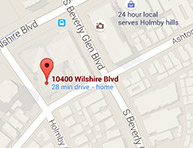While Jacob dreams of a ladder leading to heaven, he recognizes that he is in a sacred place. The midrash explains that the Temple Mount was uprooted and brought to Jacob in order that he could pray there. This short teaching gives us permission to open the gates of prayer wherever we may find ourselves. The Talmud explains that Abraham called the Temple a mountain, Isaac called it a field, and Jacob called it a house.
We all have prayed in many places. The synagogue is our fixed place, a sanctuary where we know what to expect–the liturgy, the people, and the music. Yet, prayer can be brought into the world wherever we enable our sacred sensibilities.
Last Sunday, Cantor Feldman, Benjamin Fingerhut, and I attended services at the Greater Zion Church, led by Pastor Michael Fischer. The service as a Jewish-Christian Unity program to stand by Israel.
On the pulpit, we heard from a panel–a NOVA survivor, a Holocaust survivor, and a Jim Crow survivor. Each suffered in their own personal way, and each has found hope in their won way as well.
As the evening concluded, the Jim Crow survivor answered how he finds hope. He said, “What we see hear tonight, brothers and sisters of faith, should not happen because of a program, but it should happen because we stand side by side each other.” We concluded with a song, Hinei Mah Tov, how good it is.
Within the darkness of the world, all those present felt something special, that we were there as ourselves, respecting the other, and ultimately bringing our Temple Mount to wherever we may be.
Jacob was physically alone in the desert, but he knew that he had a spiritual roof over his head.


